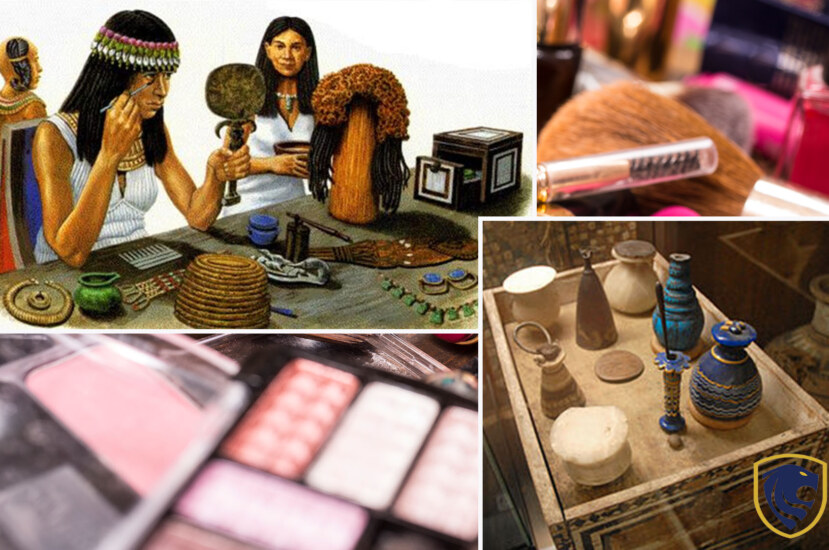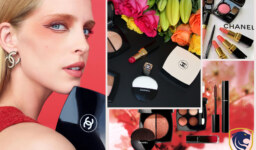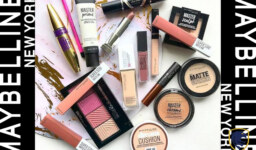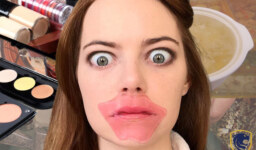Cosmetics have a fascinating and rich history that spans back thousands of years. Cosmetics have always been an element of human culture and self-expression, from ancient civilizations to the present beauty business. These astonishing goods have developed greatly throughout time, reflecting many nations’ shifting beliefs, rituals, and aesthetics. Moreover, cosmetics have functioned as status symbols, spiritual emblems, and expressions of creativity throughout history.
Cosmetics have their origins in ancient civilizations such as the Egyptians, Greeks, and Romans. To develop makeup and skincare products, these ancient societies used a variety of natural components, including plant extracts and minerals. Makeup was used for more than just ornamentation since they were tightly linked to religious ceremonies and were thought to have supernatural powers.
The art of cosmetics extended throughout continents over the ages. Each culture puts its impression on the growing practices. Cosmetics’ popularity fluctuated over the medieval era due to religious influences, with phases of acceptability and criticism. Nonetheless, the Renaissance saw a revival of interest in beauty and aesthetics, resulting in the development of new cosmetic formulas and procedures.
Then the 18th and 19th-century industrial revolutions saw substantial breakthroughs in makeup manufacture and accessibility. Mass-produced makeup became more widely available to the general public, revolutionizing the beauty sector and opening up new business options. Cosmetics witnessed extraordinary invention and worldwide popularity in the twentieth century. Beauty standards and trends were more powerful than ever before with the rise of Hollywood and the fashion industry. Cosmetics have evolved to meet the demands of today’s fast-paced lifestyle, with an emphasis on convenience and scientific developments.
Cosmetics In Middle Ages

Religious ideas and cultural conventions affected cosmetics throughout the Middle Ages. Beauty practices were frequently regarded as wicked or vain, resulting in times of disfavor. Makeup was considered connected with witchcraft and heresy during the early Middle Ages. So, there was a prohibition on their usage. The Church was influential in developing views towards cosmetics, encouraging humility and natural looks. However, certain noblewomen and courtesans continued to use cosmetics to enhance their appearance. White lead-based face powders and rouge produced from crushed plants were popular cosmetics.
Skin lightening was popular among the upper class, but peasants couldn’t afford makeup. As commerce developed and new substances became available, the popularity of cosmetics soared in the late Middle Ages. New cosmetic formulas and substances were introduced to Europe as a result of Arab influence. Cosmetic practices grew more common towards the end of the Middle Ages, signaling a change towards wider acceptability. Despite the stigma associated with immorality, cosmetics became accepted as part of good grooming. The Middle Ages created the basis for the future evolution of cosmetics, laying the groundwork for the eventual cosmetic revolution.
Renaissance cosmetics

Renaissance cosmetics showed a substantial change from Middle Ages views. During this time, beauty and personal grooming were highly respected. During the Renaissance period, there was a resurgence of interest in ancient Greek and Roman beauty standards, which influenced cosmetic practices. Women employed white lead-based makeup to obtain a pale complexion, which was still considered trendy. Concerns were raised, however, regarding the health dangers linked with lead-based products. Cosmetic formulas and beauty manuals grew popular as people sought guidance on how to improve their looks.
Makeup was not just used by the wealthy; middle-class women also embraced beauty items. Natural substances like herbs, flowers, and minerals were frequently used to make makeup at home. New cosmetic trends evolved, such as plucking brows to raise brows and emphasizing the eyes and lips. Perfumes and scented oils grew increasingly popular, reflecting the Renaissance’s taste for opulent scents. Cosmetics were no longer connected with vanity alone but with refinement and sophistication. The Renaissance created the framework for the present beauty business, with cosmetic practices and goods evolving over the ages.
Ancient Egyptian cosmetics

Ancient Egypt has a fascinating role in cosmetics history. Makeup was firmly rooted in Egyptian society and carried both practical and symbolic meanings. In Egypt, makeup was not exclusive to ladies. Both men and women highlighted themselves with beauty products. Kohl, a black eyeliner created from minerals such as galena, was a popular Egyptian cosmetic. Kohl was used for both aesthetic and therapeutic purposes, including sun protection and infection prevention. Egyptians also employed natural substances such as clay and plant extracts to manufacture cosmetics. They used brilliant colors to embellish their eyes, lips, and cheeks, exhibiting their creative abilities. Cosmetics held sacred importance in Egypt and were frequently linked with gods and rites.
The Egyptians’ commitment to detail and beauty was reflected in the complex design of makeup containers. Cosmetics were utilized by both the aristocracy and the common people, however, the quality and range of items differed. Beauty experts called “perfumers,” produced and sold makeup in marketplaces. Egyptian beauty practices affected other ancient civilizations, causing cosmetic styles to spread around the world. The use of makeup in ancient Egypt exemplifies the perennial yearning for self-expression, aesthetic enhancement, and spiritual connection. It is a lasting monument to the influence of makeup on culture and identity throughout history.
The 19th and early 20th centuries

The 19th and early 20th centuries
The nineteenth and early twentieth centuries saw substantial global breakthroughs in cosmetics, influenced by industrialization, scientific advances, and shifting aesthetic ideals. Cosmetics became more available to a wider audience as a result of industrialization. The use of lead and other hazardous compounds in makeup generated health concerns, prompting the creation of safer substitutes. The beauty business grew fast in the nineteenth century, producing a diverse range of items such as creams, powders, and lipsticks. Beauty salons and makeup stores began to appear in major cities, offering clients beauty treatments and products. Beauty standards evolved in the early twentieth century, inspired by the advent of film and fashion icons.
Hollywood celebrities such as Clara Bow and Louise Brooks impacted cosmetics trends, emphasizing big, dark eyes and red lips. Max Factor, a forefather of cosmetics, created the first flexible grease paint foundation, which revolutionized cinematic makeup. During this time, cosmetic firms such as Maybelline and L’Oréal were formed to meet the expanding need for cosmetics. The introduction of color photography and print media increased the popularity of makeup in everyday life. In the early twentieth century, classic goods like mascara and compact powder were also introduced. During the suffrage movement, cosmetics became more associated with women’s liberation and self-expression.




